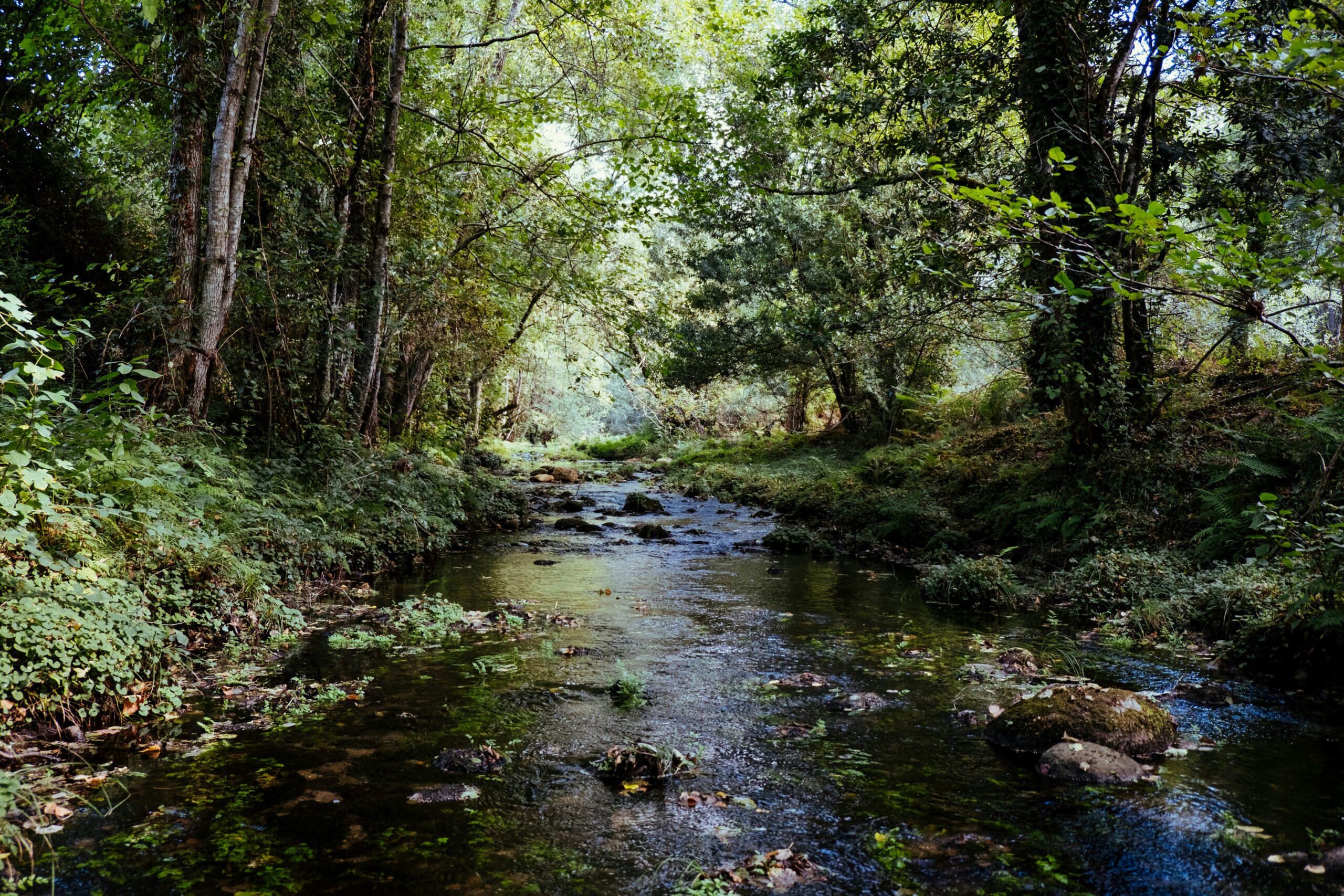Heroes
Farmer’s Creek Restoration Attracts Phenomenal Wildlife Return

Quick Smiles:
- UK farmers are fighting floods by reverting parts of their farms to their natural state, which has led to a resurgence of wildlife and a reduction in flooding.
- James Robinson, a farmer from Cumbria, has partnered with the Ullswater Catchment Management CIC to transform sections of his farm into wetland sanctuaries, attracting a wealth of birds and invertebrates.
- The restoration of streams to their natural, meandering paths has been a successful model, leading to its adoption across the region.
Farmers in the UK are putting up a spirited fight against flooding by giving parts of their farms a natural makeover. This eco-friendly approach has not only welcomed back wildlife in droves but also served as a practical solution to mitigate flooding.
James Robinson, a farmer with roots in Cumbria, northwest UK, has joined forces with the Ullswater Catchment Management CIC. Together, they’ve transformed several sections of his farm into wetland wonderlands, buzzing with birds and invertebrates.
Flooding is a significant natural hazard in the UK, largely due to the transformation of waterways into deep, straight canals centuries ago. These man-made channels were designed to facilitate boat travel across the country, but they also channel water at much higher volumes and speeds than natural, winding streams.
Farmers like James Robinson are working tirelessly to reverse this process. They’re restoring rivers and streams to their natural, meandering state, slowing down the water flow and reducing the risk of flooding.
The Ullswater CIC, a Community Interest Company, has seen their stream restoration model gain popularity across the region. This includes areas like Glenridding, Windermere, West and South Cumbria, and Ullswater. “People seem to like this model,” said Danny Teasdale, the CEO of Ullswater Catchment Management, during an interview with DEFRA.
The ripple effect of this initiative is impressive. As farmers chat about their experiences, more people are getting involved. The growth of the project has also led to the employment of local contractors, ensuring that any funds generated stay within the community.
Strickley Farm, where James Robinson and his family have been farming for generations, has always had streams running through it. These streams, or “becks” as Robinson calls them, have been the epicenter of much flooding over the years.
Despite efforts to control the flooding by dredging the streams, Robinson never saw much of a difference. However, he saw potential in a 4 to 5-acre piece of “rubbish” land. “In agricultural terms; it was rubbish, but environmentally and its potential or habitat was huge,” Robinson told DEFRA. He decided to put it to better use by transforming it into a natural habitat.
Teasdale and Robinson worked together to re-meander the stream, create ponds, and plant trees to prevent soil erosion. They also fenced off the area to allow the vegetation to regrow robustly.
The results have been nothing short of phenomenal. “The amount of life that has come is absolutely phenomenal,” Robinson told the Guardian. The area is now teeming with bird life and always has standing water, even during dry spells.
The restored wetland is now home to dragonflies, snipe, and even a barn owl, which hadn’t been seen on the farm in 40 years. “We’ve come down here one evening and there it was hunting, and we see it most evenings now hunting over there,” says Robinson.
Restoring the natural path and character of streams and rivers has numerous benefits, including carbon sequestration. Wetlands store more carbon underground than forests due to less decomposition of plant material.
In a landmark study by the UK Center for Ecology & Hydrology, scientists found that the majority of species thrived better in a partially-rewilded farm than in other comparable farmed landscapes. This was achieved without a drop in yield corresponding to the surrender of farming acres.
The scientists attributed this to a variety of “ecosystem services” that are difficult to quantify all together, but could involve such things as natural pest control from increased numbers of insect-eating birds.
This project is a shining example of how we can make room for nature while also addressing environmental challenges. Let’s share this uplifting story and inspire others to follow in their footsteps!

-

 Cute Animals2 years ago
Cute Animals2 years agoPuppy Love Patrol: Service Dog Swoons Over K9 Officer Neighbor
-

 Cute Animals2 years ago
Cute Animals2 years agoHugs, Hooves, and Happiness: Newborn Donkey Steals Hearts by Demanding Affection [Video]
-

 Cute Animals2 years ago
Cute Animals2 years agoWATCH: A German Shepherd’s Surprising Parenting Instinct for Lost Ducklings!
-

 Cute Animals2 years ago
Cute Animals2 years agoPetty Pup Pulls Off Hilarious Bone Heist [Video]
-

 Heroes2 years ago
Heroes2 years agoA Lost Dog’s Bark Leads to a Lifesaving Discovery
-

 Cute Animals2 years ago
Cute Animals2 years ago“Pure Love”: Adopted Rescue Dog Can’t Hide How Grateful He Is [Video]
-

 Cute Animals2 years ago
Cute Animals2 years agoTiny but Mighty: Cat with Dwarfism Becomes Internet Star as Owners Adapt Backyard for Her Comfort
-

 Cute Animals2 years ago
Cute Animals2 years agoAdorable Puppy Steals Hearts After a Tiring Swim [Video]